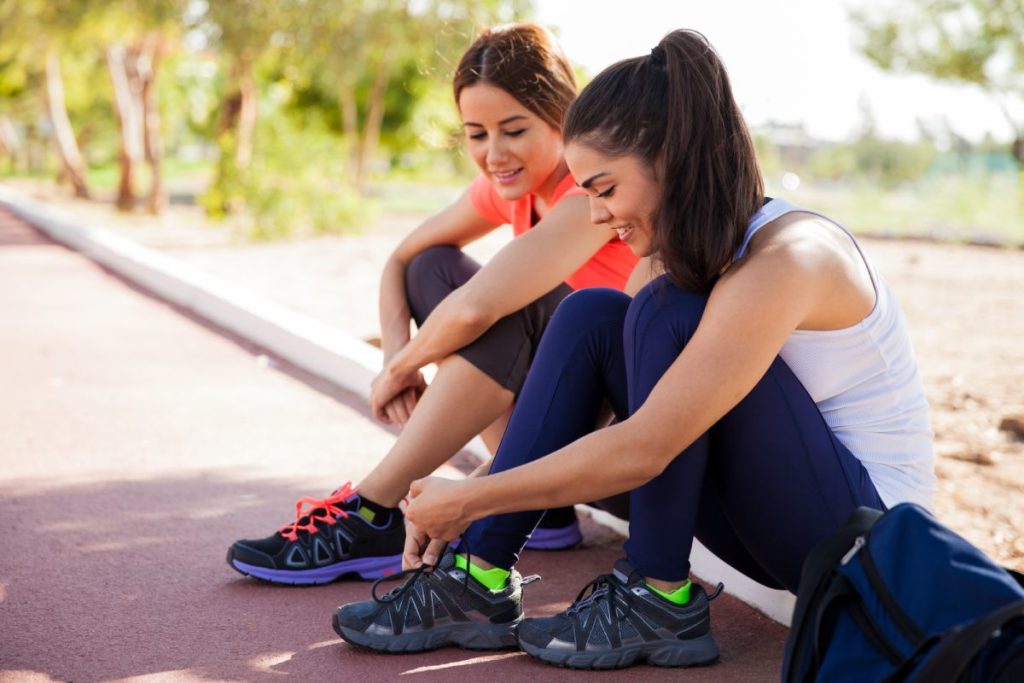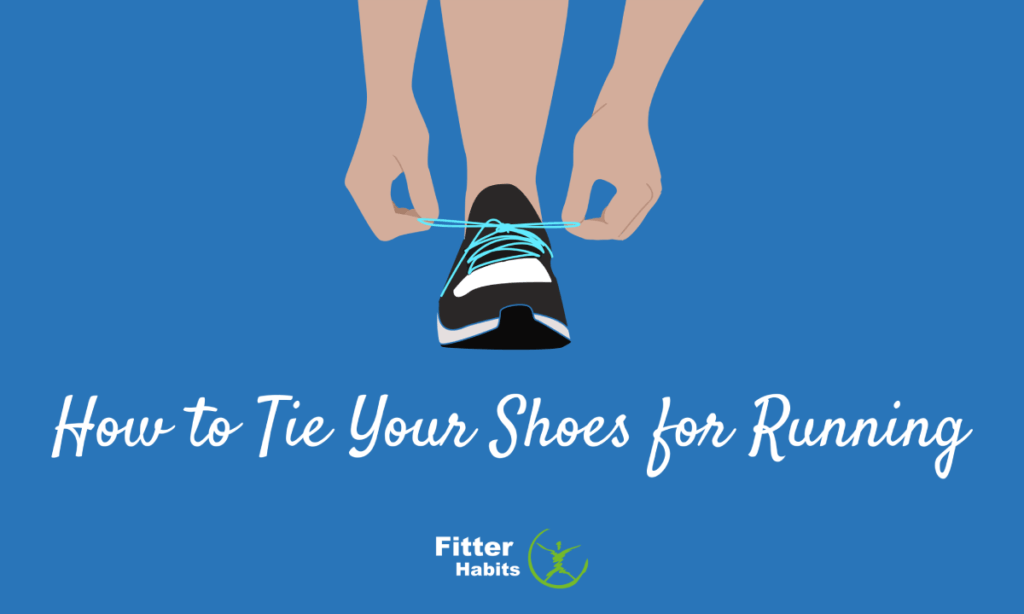Believe it or not, the method you use on how to tie your shoes for running can have a serious impact on your performance. Explore three tried-and-true methods.
After you mastered tying your shoes as a kid, you probably didn’t give this simple life skill much more thought. Now that you’re a runner, though, you may have noticed that other runners seem to have all kinds of different strategies and methods for lacing up and tying their shoes. Do they know something that you don’t?
While you probably haven’t analyzed how you tie your running shoes before, there are quite a few methods that have gained popularity and traction with experienced runners. By having a better understanding of why how you tie your running shoes matters and which method(s) may work best for you, you can lace up for your next run with a little more confidence!
Contents
Does How You Tie Your Shoes Really Matter?

While there’s nothing inherently wrong with leaving your running shoes laced up exactly how they came out of the box, the reality is that the manner in which you lace and tie your running shoes actually can make a difference. That’s because properly laced and tied running shoes can optimize your fit and comfort—which can, in turn, improve your performance.
Of course, it’s important to understand that no shoe-tying method is a substitute for having running shoes that actually fit you properly. That should be your number one priority.
Whether you’ve noticed that you tend to develop uncomfortable pressure points in your feet while running or simply that your shoes seem to become annoyingly (and even dangerously) untied while running, there are some shoe-tying methods worth trying out for yourself!
Tying Your Running Shoes: 3 Popular Methods
Option 1. The Runner’s Loop
The Runner’s Loop is a popular lacing and tying option for runners who sometimes have trouble with their feet sliding forward and their toes “bumping” the top of the shoe. Specifically, The Runner’s Loop can help secure the heel so as to prevent slippage, resulting in a more comfortable run!
Keep in mind that this method may require a little bit of extra length in your shoelaces. If your current laces are too short to tie your shoes with this method, try swapping them out with a longer set of laces.
To tie your shoe in The Runner’s Loop, begin with your shoes laced normally (as they likely came out of the box), ensuring that they are criss-crossed all the way up to the second eyelet (lace hole).
Once you get to the second eyelet, however, pull the lace through the same side and insert it into the top eyelet on that side to create a loop. Repeat this step on both sides before pulling each lace across and through the loop that you formed on the opposite eyelet.
Finally, pull tightly to secure each lace on either side and tie your shoes as you normally would.
Option 2. Window Lacing
Another option to consider is the Window Lace, which is ideal for relieving pressure points that often form near the top of the foot while running.
To complete this tie, you’ll need to begin by unlacing your shoes down to whichever eyelet falls directly below the pressure point on your foot. For many runners, this is somewhere around the third or fourth eyelet, though this can vary from one running shoe to the next.
Rather than running your laces through this eyelet normally, lace them straight through and up to the next eyelet. Essentially, you’re “skipping” the eyelets that appear directly over each foot’s pressure point. From there, you can continue lacing and tying your shoes as you normally would.
Option 3. The Reef Knot
If you’re frustrated by shoes becoming untied while you’re running, you’re probably using a “Granny Knot” rather than the more secure “Reef Knot” (also known as a square knot).
Knowing how to tie your running shoes in a Reef Knot can reduce the risk of them coming untied while running and thus protect you from accidental trip-and-fall injuries!
Start by creating a loop with one side of your shoelaces, just as you normally would to tie a traditional knot. From there, however, you should wrap the other side of your lace behind the base of the loop and then in front of it. You’ll notice that this will achieve a straight, even tie as opposed to the often-lopsided tie that you get with a traditional Granny Knot.
If you’re looking for even more security, you might consider throwing your running shoes into a double loop. This involves tying your laces in a second knot to make them less likely to come undone while running.
The Final Word on How to Tie Your Shoes for Running
These are just a few of the many methods that runners use to tie their shoes for greater comfort and support. Ultimately, finding the right method for you will probably involve a little bit of experimenting, trial, and error. Once you’ve found the method that works best for your needs, though, you may find yourself wondering how you ever tied your shoes any other way!
FAQs About How to Tie Your Shoes for Running
How to lace your shoes for high arches?
If you have high arches, you probably experience uncomfortable pressure points while running. This can be alleviated using a Window Lacing technique, which will reduce pressure caused by high arches and allow you to enjoy a more comfortable run.
How to tie your running shoes for ankle support?
If you’re looking for more ankle support and blister prevention, you’ll want to try The Runner’s Loop method of shoe tying. Also commonly referred to as a “heel lock,” this method provides extra support and prevents the foot from shifting within the shoe.



